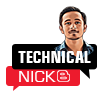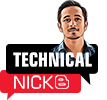What is a Tech Stack?
A tech stack is a collective term for all the software, frameworks and libraries that make up a technology system.
Tech stacks are a great way to identify what technologies are required for your project. They can also provide insight into which technologies may be complimentary or redundant.
In order to create an effective tech stack, it is important to understand that it is more than just the individual technologies. The system needs to be fully operational and the person building the stack must know how they will integrate them together.
The Value of One’s Technology Stack
A technology stack is a set of technologies for a company’s IT infrastructure, product platform, and operations. It is important to have the right tech stack for a new business as it can affect everything from hiring to financing.
Developers are always seeking the best technologies that will help them develop their products better, faster, and cheaper. Every developer has their own idea of what they see as valuable tools to use in order to achieve this goal. Some developers might see React.JS as more valuable than AngularJS just because they have had more experience with it or think that Node is better than Ruby because the company may have just started using Node.
In other cases, there may be value placed on specific tools because they may be needed in order to follow certain frameworks or coding standards or regulations because of its purpose. For example Amazon Web Services has been mandated by law in China since 2018 into all new applications created in China due to its ability to censor content when needed.
What does a “good” tech stack look like?
For large-scale, complex applications, a good Tech stack should have a capable database for storage and query. The application should be scalable for future growth in use by the company and should be accessible from any device.

A Good tech stack is not just about what the company can do with it today. It is about what the company can do with it tomorrow, next week, or in 6 months. A good tech stack needs to have room for expansion and growth, both within the application and in the company’s organizational structure as well.
A good technology stack is one that meets all of these criteria and provides valuable tools for dealing with issues down the road when they happen.
What are the Advantages of Choosing the Right Tech Stack?
Companies usually experience a lot of pressure to provide increasingly complex software with rising expectations for fast development cycles.
Choosing the right tech stack is important to manage these pressures. A good tech stack will help you achieve your business objectives while avoiding any issues that arise from your code.
The advantages of choosing the right tech stack can be summarized in five points: it allows you to build scalable software, it reduces complexity, it boosts productivity, it improves time-to-market and it helps you identify risks earlier
What is the Different Types of Technology Stacks in the Present and Future?
The up and coming generation of developers will fight for jobs with a new type of tech stack – one that is more complex, demanding, and needs to offer more. With this kind of tech stack, we can expect new innovations in frontend and backend development. This shifts the focus from web technologies to data-driven technologies. With the advent of this advancement, it will be possible to create basic AI assistants or even intelligent chatbots that are powered by these data driven tech stacks.
Here the different types of technology stack:
1) MEAN Stack:
MEAN Stack is a JavaScript-based open source web application platform, built on Node.js, MongoDB, Express, and AngularJS
The MEAN Stack is a web application development stack for building dynamic and scalable websites. It consists of MongoDB, the Express framework for node.js-based development, AngularJS for the front-end UI framework, and Node.js as the runtime environment where this trio meets in a perfect match of convenience and effectiveness.
2) MERN Stack:
MERN emphasizes the importance of three key elements: Web Development Frameworks, Databases, and Language or Runtime. It stands for MongoDB (Database), Express (Server Framework), React (Frontend Framework), and Node.js (JavaScript Runtime).
The purpose of having these three key components separate from each other is to make it easier for developers to work on an entire project without having to reverse engineer their code just to switch out one component for another.
One more thing to note about MERN is that unlike MEAN which relies heavily on a single framework in AngularJS. If you are new to this technology stack, consider contacting MERN stack development outsourcing company, they can guide throughout and provide top talented resources for your projects.
3) LAMP Stack:
LAMP Stack is a group of software programs that are executed together to provide a complete web server environment in the most basic sense.
The acronym LAMP stands for Linux, Apache, MySQL, and PHP/Python. The LAMP Stack is used by many websites and web applications.
The LAMP stack is a collection of open-source technologies for building an Internet-based server environment that supports both dynamic web pages and database-driven content.
4) The Serverless Stack:
Serverless is a new way of deploying applications where the cloud provider and the developer agree on what parts of the application should run in the cloud, and which parts should run outside in some other environment.

Serverless architecture uses servers for only two things: hosting code, and running code. Usually, it doesn’t need to worry about scaling up or down with traffic changes (that is usually taken care of by the cloud provider). And also, in serverless architecture, developers can focus on coding business features rather than infrastructure management.
5) Flutter for Web:
Flutter for Web is a framework that allows developers to easily create cross-platform applications. It is easy to use and has the potential to become a developer favorite.
Flutter for Web is an open-source framework that enables developers to create cross-platform UI in record time.
It utilizes the same codebase for both Android and iOS, so you don’t have to rewrite code or perform extra testing on each platform.
Using these features, Flutter has the potential to become one of the most popular frameworks available because it saves time and money while enabling developers to create better apps faster.
How to Choose the Best Technology Stack for Your Company?
In order to choose the best technology stack for your company, you should consider the following:
1. What are your company’s goals?
2. What types of product do you produce?
3. How much resources do you have available to invest in new technologies?
4. Which technologies are constantly evolving and demand a high investment?
The first thing to do when choosing a technology stack is to find out what needs your company has and figure out which language would work best. This means you have to have an understanding of your company’s background and what it is trying to achieve with its product. You should also figure out who your target audience or customer is, this will help you make decisions on what databases, servers, or programming languages you need to use.
Conclusion
Choosing the right tech stack should not be a difficult decision because you can always tweak the stack for your needs. The choice of tech stack depends on many factors. These factors range from personal preferences, budgetary constraints, time availability and technical considerations. All these influence the type of stack to use for a particular project. And it is necessary to consider all these aspects before making any decision about what technology to use.
To Read More Tech Blogs Visit: Technical Nick

















